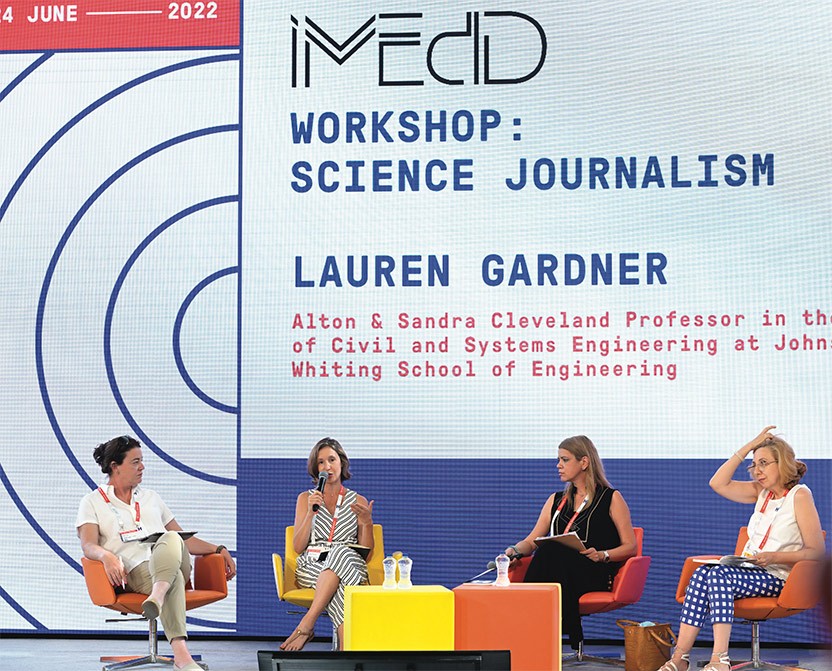
Lauren Gardner
Johns Hopkins University
For creating the Covid-19 Dashboard, which set a new standard for disseminating authoritative public health data in real time
The 2022 Lasker~Bloomberg Public Service Award honors Lauren Gardner (Johns Hopkins University) for creating the Covid-19 Dashboard, which set a new standard for disseminating authoritative public health data in real time. By launching this global Covid-19 surveillance tool, she provided accessible and reliable information about the spread of an emerging infectious disease, thereby filling a void in the international public health system and establishing a model to emulate. This trailblazing resource lit a path toward informed policy guidelines and personal choices amidst a morass of misinformation.

Building Castles in the Sky and Houses of Cards That Don’t Collapse
The creative process involves two phases—generating new ideas and then focusing on the most tractable and useful ones.

Acceptance remarks, Lauren Gardner
It’s been an exceptional experience to play such an integral role in keeping the world informed during a global public health crisis, and perhaps equally important, changing the expectations around public access to data and information.
I grew up in a very science-minded household, and that experience nurtured my curiosity, and instilled in me a deep appreciation for rational and evidence-based thought. I chose to pursue a PhD in Civil Engineering, specifically on the topic of network modeling, because I always appreciated how seemingly disparate systems were connected, and I believed this expertise, grounded in mathematics and data, would enable me to work on most any topic I found interesting.
When my PhD student, Ensheng Dong, and I started the dashboard in January 2020, of course we didn’t know the scale Covid-19 would evolve to.
But even at that time, I understood the value of science and data. In the current age of misinformation, democratized data and science communication is critical; it enables the general public to make informed decisions regarding their personal health, and enables evidence-based public health policy.
Given the amount of misinformation in circulation and the highly politicized nature of the Covid-19 public health crisis, our work enabled individuals to access the information they needed to make informed decisions to protect themselves, which was especially critical in those locations with delayed or non-existent policies in place.
I am optimistic that in the future timely public health information will become increasingly available, especially in times of crisis. Moving forward I am excited to build on our learnings from Covid-19, and transfer that knowledge to address other problems facing societies. These are problems that range from providing individual-level access to basic services to responding to the threat of global climate change. These are problems that are human centric, with deep rooted inequities. These are problems that are often highly politicized. These are problems that demand data driven solutions and effective science communication. And central to many of these problems is the harm posed by misinformation, arguably one of the most significant threats facing societies today.
Confronting these issues will require investment and innovation in interdisciplinary sciences, and strong partnerships between researchers and practitioners. This new interdisciplinary field of engineering, grounded in the use of data and mathematics to address the needs of a society and improve quality of life, is one I am excited to be working in. And I am extremely grateful to my students, colleagues and all those who have been contributing their time and efforts towards Covid-19, among the many other challenges we face, in efforts to make the world a better place.



